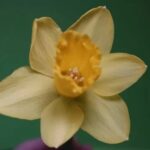When it comes to creating a welcoming and beautiful outdoor space, don’t overlook the importance of side landscaping. In this article, we’ll explore a variety of side landscaping ideas that can enhance the curb appeal of your home and create a private outdoor oasis. Whether you have a small or large side yard, there are countless ways to maximize the potential of this often underutilized space.
Assessing your side yard is the first step in developing a plan for your side landscaping project. Understanding the size, shape, and current condition of the area will help you determine what plants and design elements will work best. Considerations for sunlight, soil quality, and drainage are also important factors to take into account when planning your side landscaping project.
Choosing the right plants for your side yard is crucial in creating a low-maintenance and visually appealing landscape. From drought-resistant plants to native species and edible landscaping, there are endless options to suit your preferences and environmental conditions. With the right plants in place, you can create a thriving and sustainable side yard that adds beauty and value to your home.
Assessing Your Space
Assessing your side yard is the first crucial step in creating a beautiful and functional outdoor space. Understanding the size, shape, and current condition of your side yard will help you make informed decisions about landscaping and design. When evaluating your space, consider any potential challenges such as sunlight exposure, soil quality, and drainage issues.
Tips for Evaluating Your Side Yard
Start by taking measurements of your side yard to determine its size and shape. This will help you plan for any structures or landscaping elements you want to incorporate. Take note of any existing features such as trees or shrubs that you may want to keep or remove. Assess the condition of the soil to determine its drainage capabilities and fertility. This will inform your plant selection and garden layout.
Considerations for Sunlight, Soil, and Drainage
Observe how sunlight moves across your side yard throughout the day to determine where shade-loving or sun-loving plants would thrive best. Additionally, assess the drainage patterns in your yard to identify areas prone to pooling water or erosion. Understanding these factors will allow you to tailor landscaping solutions that work harmoniously with your side yard’s unique characteristics.
By thoroughly assessing your side yard, you can create a tailored landscaping plan that maximizes its potential while addressing any limitations it may have. Whether it’s maximizing sunlight exposure for vegetable gardening or finding stylish solutions for a sloped landscape area, understanding your side yard is crucial for successful landscaping.
Choosing the Right Plants for Your Side Yard
When it comes to side landscaping ideas, choosing the right plants for your side yard is essential in adding beauty and value to your outdoor space. The plants you select should be well-suited to the unique characteristics of your side yard, such as sunlight levels, soil type, and drainage conditions. Low-maintenance and drought-resistant plants are excellent choices for side yards, as they can thrive with minimal care and water.
One excellent option for side yard landscaping is to incorporate native plants. These local plant species are well-adapted to the climate and soil conditions of your area, making them more likely to thrive with minimal maintenance. Additionally, native plants provide important habitats for local wildlife such as birds, bees, and butterflies, adding a lively and natural element to your side yard.
Edible landscaping is another fantastic idea for incorporating the right plants into your side yard. Consider growing herbs, vegetables, or fruit trees along the side of your home. Not only will this add beauty and charm to your outdoor space, but it will also provide you with fresh produce right outside your door. Just ensure that the edible plants you choose receive adequate sunlight and are planted in well-draining soil for optimal growth.
| Low-Maintenance Plants | Drought-Resistant Plants | Native Plants |
|---|---|---|
| Lavender | Succulents | California Poppy |
| Hostas | Russian Sage | Columbine |
| Ferns | Lavender Cotton | Black-Eyed Susan |
Creating Privacy and Security With Side Landscaping
Creating a private and secure outdoor oasis in your side yard is essential for enjoying the space to its fullest potential. There are several options for achieving privacy and security while also enhancing the overall aesthetic of your side landscaping.
Adding Fencing, Trellises, or Hedges
One of the most common ways to create privacy in a side yard is by installing a fence. Whether it’s a traditional wooden fence, a modern sleek metal design, or even a living fence made of intertwined vines and foliage, there are numerous styles to choose from that can complement your home’s architecture.
Additionally, trellises can be used to add vertical interest while allowing for climbing plants like jasmine or wisteria. Hedges are another popular option for creating natural barriers that provide privacy and can also act as noise barriers.
Enhancing Security With Lighting and Motion Sensors
Incorporating lighting into your side landscaping not only adds ambiance and highlights focal points but also contributes to security. Motion sensor lights are an effective deterrent for intruders and provide peace of mind for homeowners. There are various styles of outdoor lighting fixtures available, including solar-powered options for eco-friendly solutions.
Maintaining Aesthetic Appeal
While creating privacy and security features in your side yard is important, it’s equally crucial to maintain the overall aesthetic appeal of the space. When planning these elements, consider how they will complement the existing landscaping design. This includes matching fencing materials with the exterior of your home or choosing lighting fixtures that enhance the architectural features of your property.
Overall, when considering side landscaping ideas that incorporate privacy and security elements it is important to strike a balance between functionality and aesthetics while also adding value to your outdoor space.
Functional Design Ideas for Side Landscaping
When it comes to side landscaping ideas, functionality should be a top priority. Utilizing the space effectively not only enhances the visual appeal of your outdoor area but also makes it a more practical and enjoyable space to use. Here are some functional design ideas to consider for your side yard:
- Pathways: Create a charming pathway using materials such as gravel, stepping stones, or pavers. This not only adds an inviting element to your side yard but also ensures ease of access for maintenance tasks or simply enjoying the space.
- Seating Areas: Incorporate a small seating area with comfortable outdoor furniture where you can relax and unwind. Whether it’s a cozy bench under a shade tree or a bistro set next to a garden bed, having a designated spot to sit allows you to fully appreciate your side yard.
- Garden Beds: Implement raised garden beds or planter boxes along the side of your house to grow flowers, herbs, or vegetables. This not only adds greenery and color but also serves as a functional feature for planting and harvesting.
In addition to these ideas, consider maximizing space through vertical gardening and container planting. Vertical gardening involves utilizing trellises, hanging planters, or living walls to add depth and interest to your side landscaping while saving valuable ground space. Container planting allows you to grow various plants in pots or containers, making it easy to rearrange them and adapt to different seasons or design preferences.
By integrating these functional elements into your side landscaping, you can transform it into a versatile and practical outdoor space that meets both aesthetic and practical needs.
Incorporating Water Features Into Side Landscaping
Adding water features to your side landscaping can transform it into a peaceful and serene outdoor sanctuary. Whether you have a small fountain, a pond, or a birdbath, water features can attract wildlife and create a tranquil atmosphere in your side yard. One popular option is installing a small fountain, which not only adds visual interest but also provides soothing sounds that can drown out neighboring noise.
Another idea is to add a pond, which can support aquatic plants and attract birds and other wildlife. For those with limited space, a birdbath is an easy yet effective way to invite birds into your yard and create a calming environment.
When incorporating water features into your side landscaping, it’s essential to consider the maintenance requirements of each option. Fountains may need regular cleaning to prevent clogging and keep the water flowing smoothly. Ponds require additional care such as monitoring water quality and maintaining pumps and filters. On the other hand, birdbaths are relatively low-maintenance but should be cleaned regularly to prevent the spread of diseases among visiting birds.
In addition to creating a sense of tranquility, water features can also enhance the overall aesthetic appeal of your side landscaping. By strategically placing them within your yard, you can create focal points that draw the eye and add visual interest to an otherwise overlooked area.
| Water Feature | Maintenance Requirements |
|---|---|
| Fountain | Regular cleaning, check for clogging |
| Pond | Monitoring water quality, maintaining pumps and filters |
| Birdbath | Regular cleaning to prevent bird diseases |
Maintenance Tips for Side Landscaping
Maintaining a well-kept side yard is essential to ensuring that your landscaping continues to enhance the overall appearance of your outdoor space. Regular maintenance not only keeps your side yard looking beautiful, but it also helps to preserve the health of your plants and prevent any issues from arising.
One important aspect of maintenance is pruning. Regularly trimming back overgrown bushes and trees, as well as deadheading flowers, will not only keep everything looking neat but will also promote healthy growth.
In addition to pruning, mulching is another vital maintenance task for your side landscaping. Applying a layer of mulch around your plants serves several purposes, including retaining moisture in the soil, suppressing weed growth, and providing insulation for plant roots. Be sure to choose an appropriate type of mulch for your climate and consider refreshing the layer periodically as it breaks down over time.
Proper watering is also crucial for maintaining the health and vitality of your side landscaping. Be mindful of the specific water needs of each plant in your side yard and adjust your watering schedule accordingly.
It’s important to strike a balance between providing enough water to sustain the plants without overwatering them, which can lead to root rot or other issues. Consider investing in a soaker hose or drip irrigation system to deliver water efficiently and directly to the root zones of your plants.
By incorporating these maintenance practices into your routine, you can ensure that your side landscaping remains vibrant and attractive throughout the year. Taking good care of your side yard will not only benefit its appearance but will also create a more enjoyable outdoor space for you and your family to relax and appreciate nature.
Case Studies
In conclusion, side landscaping is an essential aspect of your outdoor space that should not be overlooked. By focusing on the aesthetics and functionality of your side yard, you can significantly enhance your property’s curb appeal and create a welcoming outdoor oasis. As discussed in this article, there are numerous factors to consider when planning your side landscaping, including assessing the space, choosing the right plants, creating privacy and security, integrating functional design elements, and incorporating water features.
When it comes to choosing the right plants for your side yard, opt for low-maintenance and drought-resistant options that can thrive in various conditions. Consider incorporating native plants and edible landscaping to add beauty and practicality to your side landscaping. Additionally, adding privacy and security features such as fencing or trellises can create a peaceful retreat while outdoor lighting and motion sensors can provide added security to your property.
Furthermore, maintenance plays a crucial role in keeping your side landscaping in top condition. Regular pruning, mulching, and watering strategies are essential for preserving the beauty of your side yard throughout the year.
By following these tips and examples provided in this article, you can transform your side yard into a beautiful and functional space that complements your overall landscape design. Remember that with creativity, careful planning, and attention to detail, you can make the most of your side yard and create a stunning outdoor haven.
Frequently Asked Questions
How Can I Make My Side Yard Look Good?
You can make your side yard look good by adding decorative elements such as potted plants, outdoor lighting, and a pathway. Consider installing a trellis or fence to add visual interest, and choose low-maintenance plants to keep the area looking neat without requiring too much upkeep.
What Is the Best Low Maintenance Landscaping?
The best low maintenance landscaping options typically include native plants, succulents, and drought-resistant varieties that require minimal watering and care. Using mulch and ground cover can also help suppress weeds and reduce the need for frequent maintenance. Additionally, incorporating hardscaping features like gravel or stepping stones can minimize the amount of lawn or garden beds that need attention.
What Can I Do With Space at the Side of My House?
There are several ways to utilize the space at the side of your house. You could create a functional storage area for bikes, gardening tools, or outdoor equipment by installing a shed or designated storage space.
Another option is to design an outdoor seating area with comfortable furniture and shade-providing structures like pergolas or umbrellas. Planting a small vegetable or herb garden is also a popular choice for side yard spaces.

Welcome to my gardening blog! I am passionate about plants and enjoy sharing my knowledge and experiences with others. In this blog, I will write about everything related to gardening, from tips on how to get started to updates on my own garden projects.





